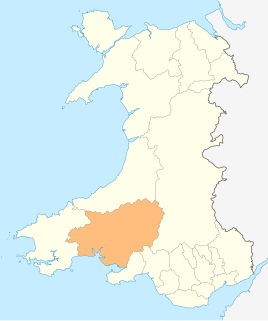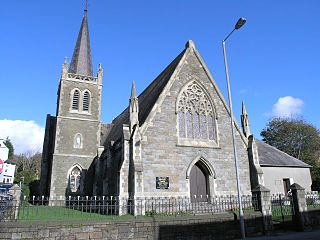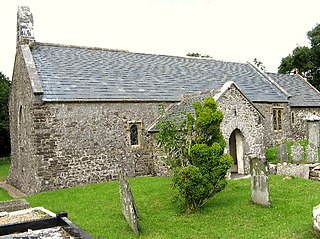| Church of All Saints | |
|---|---|
 | |
| Location | Heol Goring, Llanelli |
| Country | Wales, United Kingdom |
| Denomination | Anglican |
| History | |
| Founded | 1872 |
| Architecture | |
| Heritage designation | Grade II |
| Designated | 3 December 1992 |
| Architectural type | Church |
| Style | Victorian |
| Closed | 2011 |
The Church of All Saints is an Anglican parish church in the town of Llanelli, Carmarthenshire, Wales. It was built in 1872 and is located in Heol Goring. It was designated a Grade II-listed building on 3 December 1992, and was reported to be closed in March 2011 due to electrical defects.

Anglicanism is a Western Christian tradition which has developed from the practices, liturgy and identity of the Church of England following the English Reformation.

Llanelli is the largest town in both the county of Carmarthenshire and the preserved county of Dyfed, Wales. Located on the Loughor estuary, approximately 10 miles (16 km) west-northwest of Swansea and 12 miles (19 km) southeast of the county town, Carmarthen, LLanelli is famous for its proud rugby tradition and is a centre of tinplate production.

Carmarthenshire is a unitary authority in southwest Wales, and one of the historic counties of Wales. The three largest towns are Llanelli, Carmarthen and Ammanford. Carmarthen is the county town and administrative centre.
At the time this church was built, the amount of funds available was the determining factor when deciding on the architectural style to be used when building a new place of worship; the richer the congregation, the more ornate the church. Most churches cost somewhere between £1000 and £2000 to erect, but the Church of All Saints, Llanelli was estimated to cost £4,800 when it was built in 1872, the architect being George Edmund Street of London. [1] Additional sums were spent in 1887 when the west end was completed according to the original plans. The exterior is built with brown rock-faced rubble-stone with Bath stone dressings, and the roof is clad with green slates and terracotta ridge tiles. Besides the "exceptionally fine 5-light stained-glass east window" there is another fine window in the south aisle. [2]

George Edmund Street, also known as G. E. Street, was an English architect, born at Woodford in Essex. Stylistically, Street was a leading practitioner of the Victorian Gothic revival. Though mainly an ecclesiastical architect, he is perhaps best known as the designer of the Royal Courts of Justice, on the Strand in London.
The church was designated a Grade II listed building on 3 December 1992, and has a richly decorated interior with heavily carved reredos, and fine stained-glass windows. [2] The Royal Commission on the Ancient and Historical Monuments of Wales curates the archaeological, architectural and historic records for this church. These include digital photographs of the exterior and interior, colour transparencies and black and white postcards. In March 2011, the church was closed because of electrical problems. [3] The Church in Wales took the decision not to repair the electrics but instead to sell the church and invest the proceeds in other churches in the town. [4]

A listed building, or listed structure, is one that has been placed on one of the four statutory lists maintained by Historic England in England, Historic Environment Scotland in Scotland, Cadw in Wales, and the Northern Ireland Environment Agency in Northern Ireland.

The Royal Commission on the Ancient and Historical Monuments of Wales, established in 1908, is a Welsh Government sponsored body concerned with the archaeological, architectural and historic environment of Wales. It is based in Aberystwyth.

The Church in Wales is the Anglican church in Wales, composed of six dioceses. It defines itself as "the ancient Church of this land, catholic and reformed. It proclaims and holds fast the doctrine and ministry of the one, holy, catholic and apostolic Church". In 2017, the Church in Wales reported 210,000 attendees in its membership statistics. The Anglican church is the largest denomination in Wales.

















